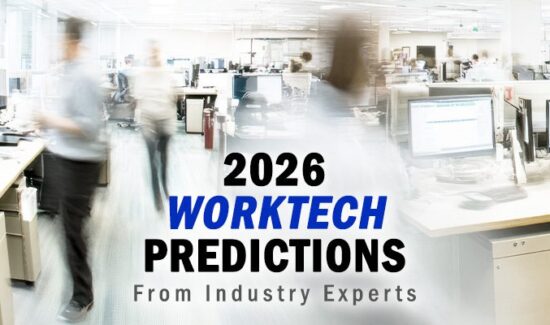What Will the AI Impact on Software Development Look Like in 2025?


The editors at Solutions Review have summarized some of the most significant ways AI has impacted software development, from hiring developers to sought-after skillsets, best practices, and more.
One of the least surprising things someone can say in 2025 is that artificial intelligence (AI) has impacted the software development space. What is less clear is the specific impact AI has had on that market and whether developers have cause for concern. As AI is integrated into software development processes at unprecedented levels, the form and function of a company’s dev team will inevitably continue changing and evolving.
To keep track of those changes, the Solutions Review editors have outlined some of the primary ways AI has changed software development, what professionals can do to remain agile during those changes, and what the future may hold for them and the technologies they use.
Note: These insights were informed through web research using advanced scraping techniques and generative AI tools. Solutions Review editors use a unique multi-prompt approach to extract targeted knowledge and optimize content for relevance and utility.
How Has AI Changed Software Development?
In just a few years, AI’s role in software development has dramatically restructured the kinds of roles, responsibilities, and required skill sets companies look for. This transformation has been freeing for many, as AI has streamlined their workloads and empowered them to focus on more specialized, high-value tasks and projects. However, it’s not uncommon for developers to feel uneasy about the rapid adoption of these technologies, as they have already proven capable of rendering some tasks and roles nearly obsolete. Here are some of the development processes that have been impacted the most by AI:
Code Generation and Assistance
Arguably, AI has had the most visible impact on DevOps in code generation. Thanks to large language models (LLMs) like GitHub Copilot, Amazon CodeWhisperer, and more general models like Claude, developers can now generate functional code from natural language descriptions in a fraction of the time. A 2024 report confirms this trend by showing that 80 percent of global developers use AI when writing code. This capability has created a force multiplier effect that enables developers to delegate routine coding tasks to AI assistants, freeing them to focus their skills on higher-level architecture and business logic.
This has reduced implementation time for common patterns but is not without trade-offs. Developers have started reporting a weakened understanding of underlying implementations, leading to what some call “implementation amnesia”—where they become dependent on AI suggestions rather than building mental models of the systems they create. That’s why traditional developers will remain essential, as their experience and thinking, when paired with AI, can improve productivity and efficiency.
Testing and Quality Assurance
Testing has also been revolutionized by AI-powered tools and bots, which can automatically generate test cases, detect edge cases, and even self-heal tests that break due to UI changes. Tools like Mabl, Testim, and Applitools use machine learning to maintain test suites with minimal human intervention.
Perhaps most significantly, AI-powered visual testing tools can detect subtle UI regressions across thousands of screen permutations in minutes rather than days, making previously impossible testing scenarios routine. The most sophisticated implementations combine reinforcement learning techniques to continuously explore application states, identifying critical bugs in production-like environments before deployment.
The benefits can be substantial, as these tools can increase test coverage and decrease maintenance costs. However, this can result in a trend where developers are overly reliant on automated testing that doesn’t use the proper verification frameworks, leading to false confidence in system stability. The most effective teams use AI to augment their human testing expertise rather than replace the contextual understanding and intuition that experienced QA professionals bring to complex systems.
Architecture and Design
Despite what you might think, AI is increasing the premium on good architecture and design rather than diminishing it. As implementation becomes easier, the relative importance of system design, interface definitions, and architectural boundaries has grown. Leading organizations now spend more time on design activities and less on implementation than a few years ago. This represents a healthy evolution, though there’s concern that AI tools aren’t yet sophisticated enough to validate architectural decisions, potentially leading to technically functional but poorly structured systems.
Inbal Shani, the chief product officer (CPO) and head of R&D at Twilio, says in an article by McKinsey, “AI can help analyze data sets and be an unbiased element in the conversation. After making strategic decisions, AI can help continuously monitor metrics and evaluate the progress.” As McKinsey’s article explains, this can accelerate development cycles by increasing the odds that resources are allocated to the most promising ideas, ultimately reducing costs and lowering the chance of failure.
The Emergence of AI-Centric Development Roles
The impact of AI on software development is significant, but the most dramatic effect on the industry is the influx of new, AI-specific roles that these technologies have necessitated. These specialized roles range from generative AI prompt engineers to workflow architects, AI code auditors, and technical debt analysts. LinkedIn’s Skills on the Rise report says as much, reporting that AI literacy is the fastest-growing skill that “professionals are prioritizing and companies are increasingly hiring for.”
One way these technologies can change DevOps teams is by converging several roles into one. For example, if AI can autonomously perform tasks that once required a human, the responsibilities of each team member are destined to change. Varun Parmar, general manager at Adobe and former CPO and COO of Miro, said to McKinsey, “The PMM and PM role will most likely converge under the same product organization.” He explains that, as AI automates more PMM-centric tasks, the “PMM function will need to go really deep into positioning and become fully integrated within the product team.”
Upskilling for the Future
Sulabh Soral, the Chief AI Officer at Deloitte, puts it this way: “Hybrid collaboration between human expertise and AI efficiency will pave the way for not only creating functional and reliable software but also groundbreaking, transformative solutions that push the boundaries of what is possible in the digital world.”
The AI impact on software development is an evolving, fluid thing. As clear as its repercussions have already proven, the continued growth and integration of new AI technologies will result in the impact being an ongoing, ever-changing reality for professionals to reckon with. However, as dramatic as the effects might be, the expertise DevOps professionals bring to the industry will never go out of style. They might need to pivot their skillsets to adapt to new or emerging needs, but the creativity of a human mind will remain essential.



















